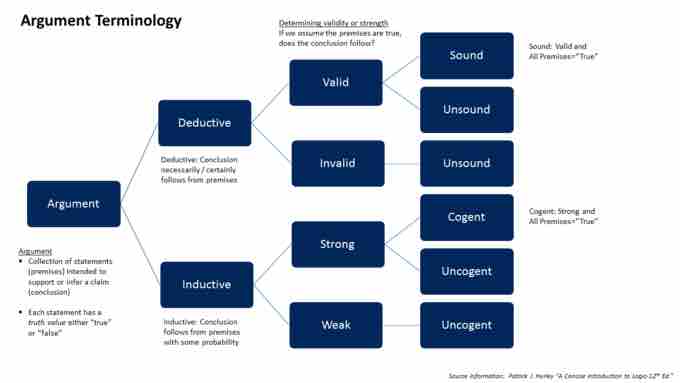An effective presentation, speech, or lecture is often divided into three parts: the beginning (introduction), the middle (body), and the end (conclusion). While the beginning and end tend to be the most memorable for the audience, it is in the body of your discussion that you make your argument. As a result, the middle is key to accomplishing your objectives for the speech.
There are a number of perspectives and considerations to keep in mind when preparing your core argument. For the purpose of this discussion, we'll look at the organization of premises to form conclusions, your audience, and the 6 I's of Credibility.
Premises and Conclusions
The beginning and end of your speech should contain an emotionally compelling conclusion, while the middle of your speech should include the logical argument you are delivering to the audience. The speech can be divided loosely into two categories of discussion: premises and conclusions.
For the middle of your presentation, it's all about selecting and communicating the key premises that enable your overall conclusion. The logic for this is fairly simple if you think of premises and conclusions as 'if' and 'then' statements. If cigarette smoke increase the risk of cancer, and if exposure to cigarette smoke doesn't require smoking the cigarette yourself, then second hand smoke is a cancer risk. This example is oversimplified, but it communicates the core logic that is necessary to build into the body of your presentation. If you do not have premises to support your conclusion, you should reconsider what you are trying to communicate.

The Anatomy of an Argument
This image outlines the anatomy of an argument. Valid premises lead to sound or cogent conclusions, while invalid premises result in unsound or uncogent conclusions.
Know Your Audience
As you construct your argument, you are also going to need to understand your audience. As a speaker, you must be aware not only of what you are trying to say, but also what your audience already knows about the topic, and their general state of mind on the subject.
For example, a neuroscientist would offer a substantially different argument with considerably more specific details if addressing an audience full of neuroscientists already aware of the trends in the field. This same speaker delivering a talk to the general public would need to carefully consider what information to add or remove in order to bring the audience up to speed without intimidating them with jargon. It is primarily in the middle of your speech where this is most important, as it's very easy to lose your audience in the details.
The 6 I's of Credibility
With the structure of your discussion in mind, and a thorough understanding of your audience, you are almost ready to deliver your core argument. The last topic of consideration is your own credibility. The following 6 considerations will help you decide if you are a credible source on the topic, and how to demonstrate that to your audience:
- Ideation – Find clever ways to present a concept, and help the audience see how you derived it.
- Information – This is where the premises come in. Make sure your facts are carefully chosen and communicated.
- Influence – Demonstrate confidence and passion in what you are saying. It's contagious.
- Integrity – Trust is key. Know what you don't know, and make sure the audience does too.
- Impact – Find memorable ways to build roots in the memories of your audience. Stories and examples are great tools for this.
- Ignition – Finally, make your conclusion actionable. Motivate your audience not only to agree with your point, but to build it into their lives.